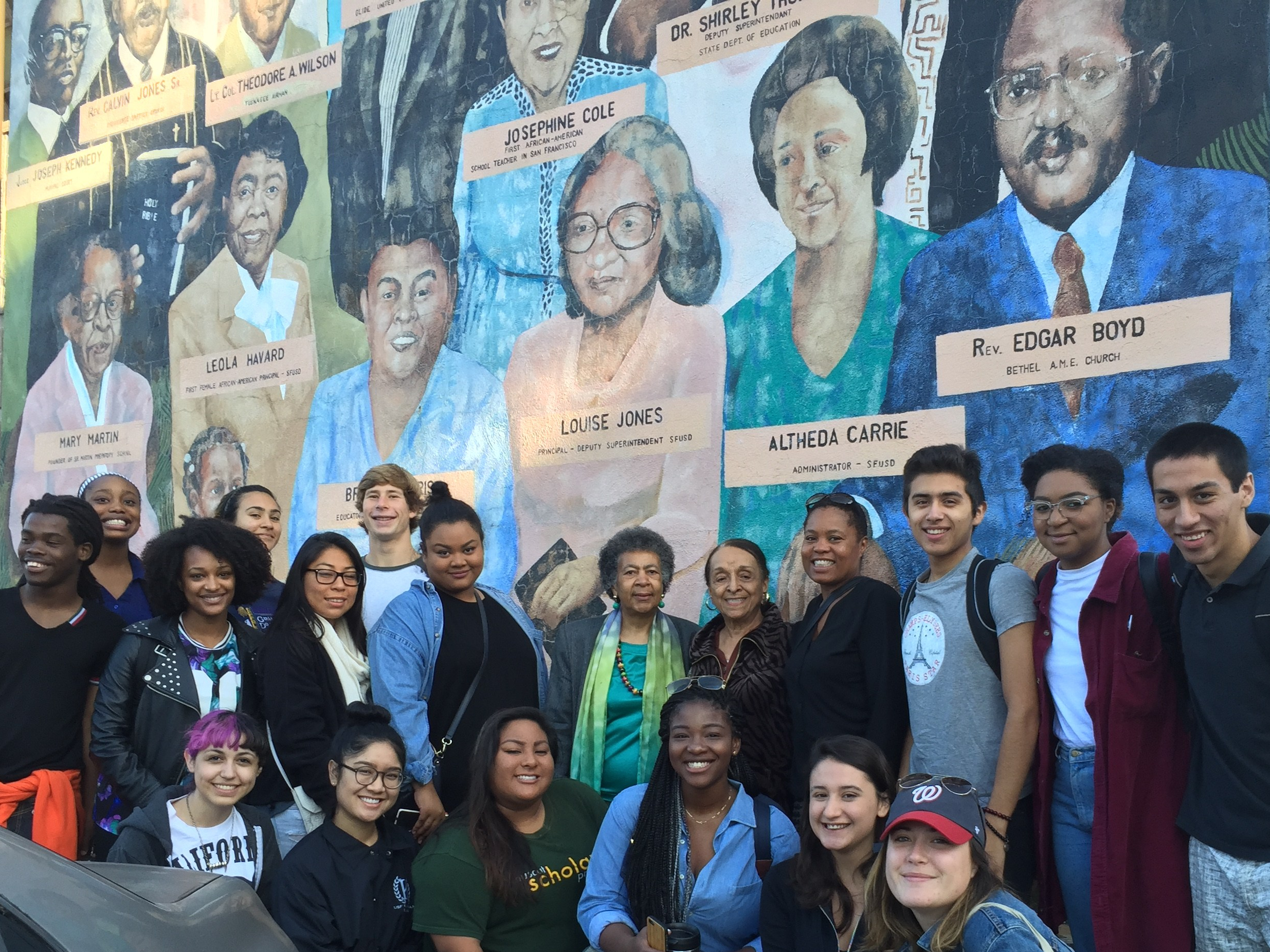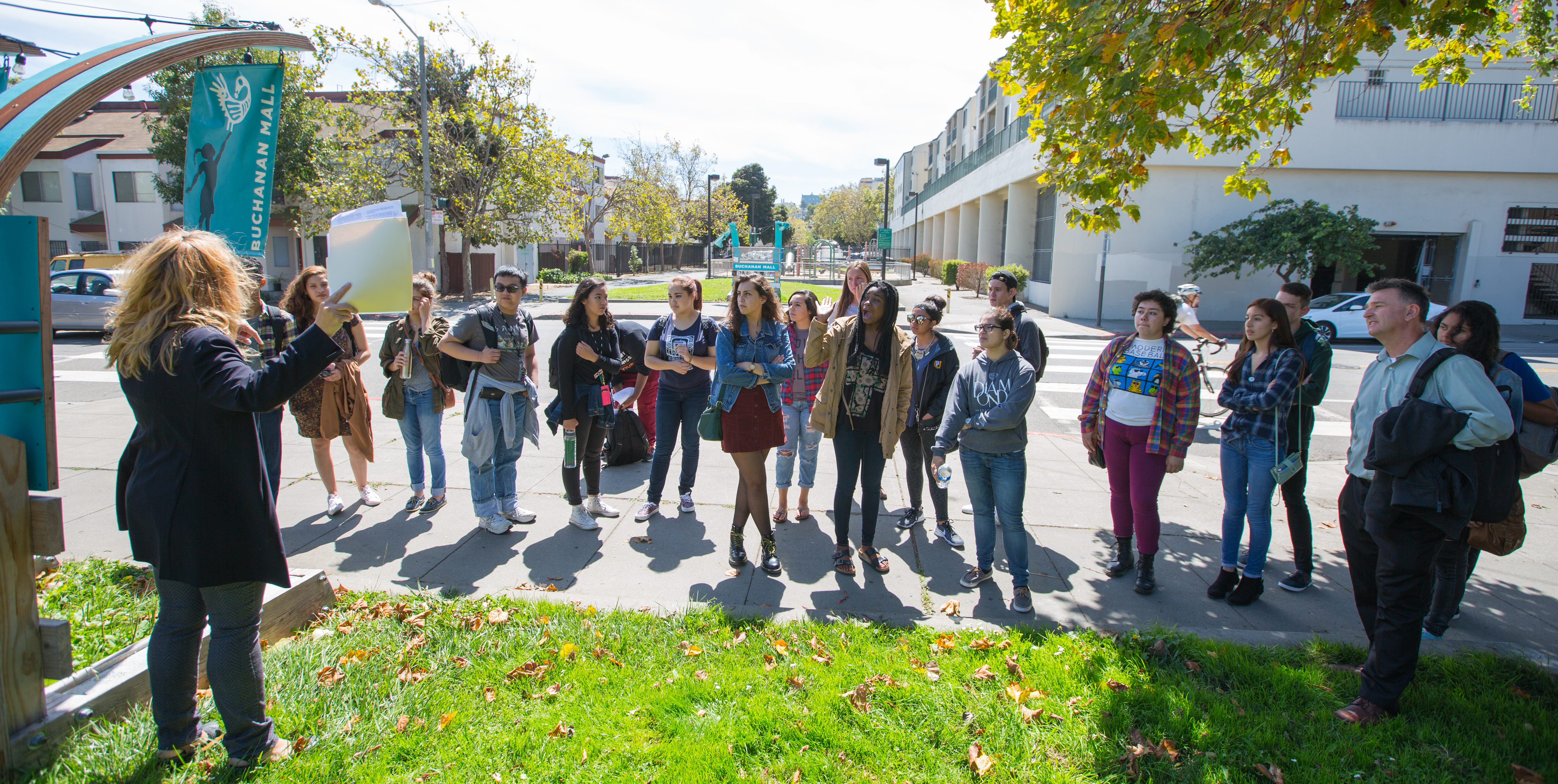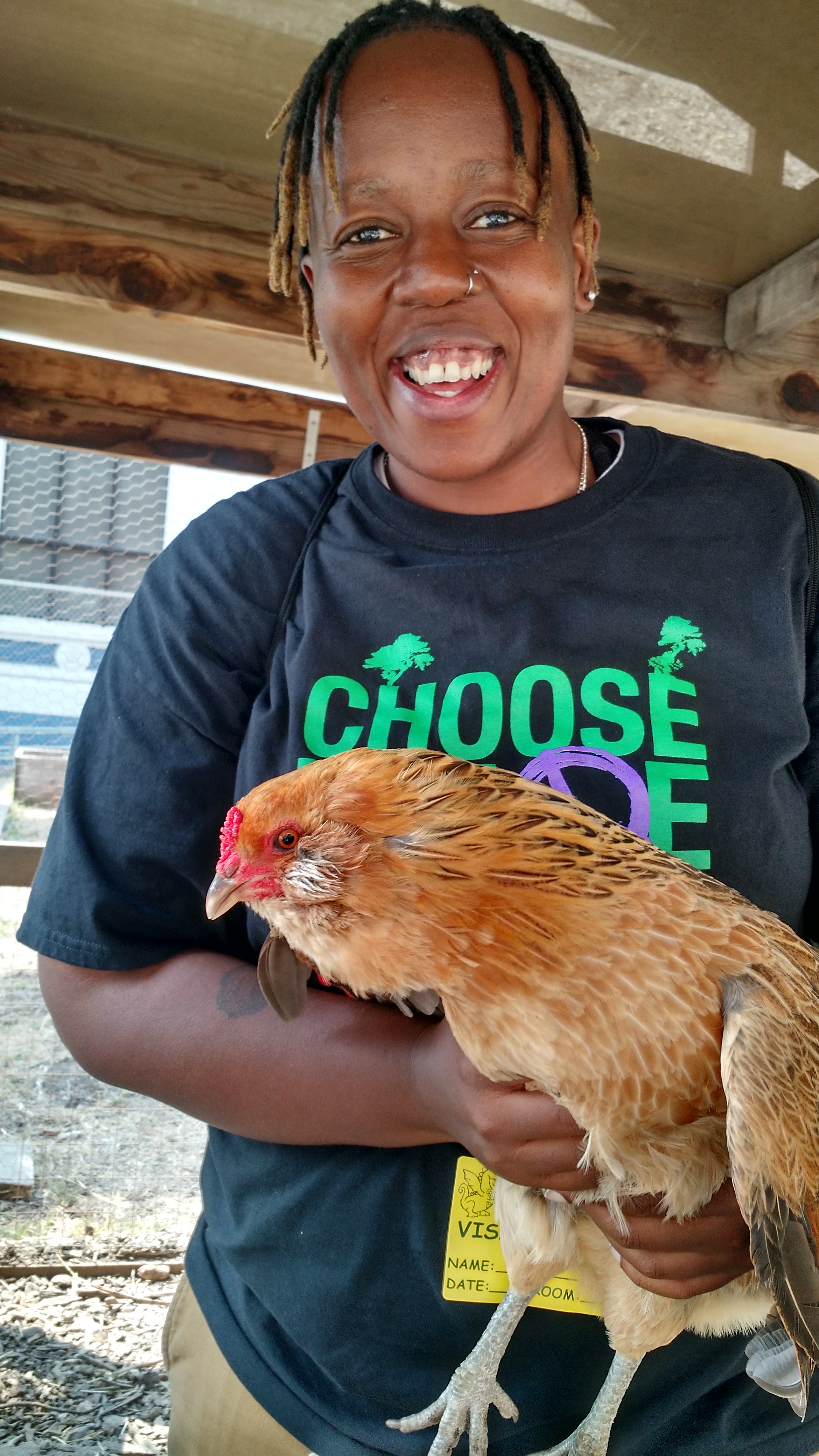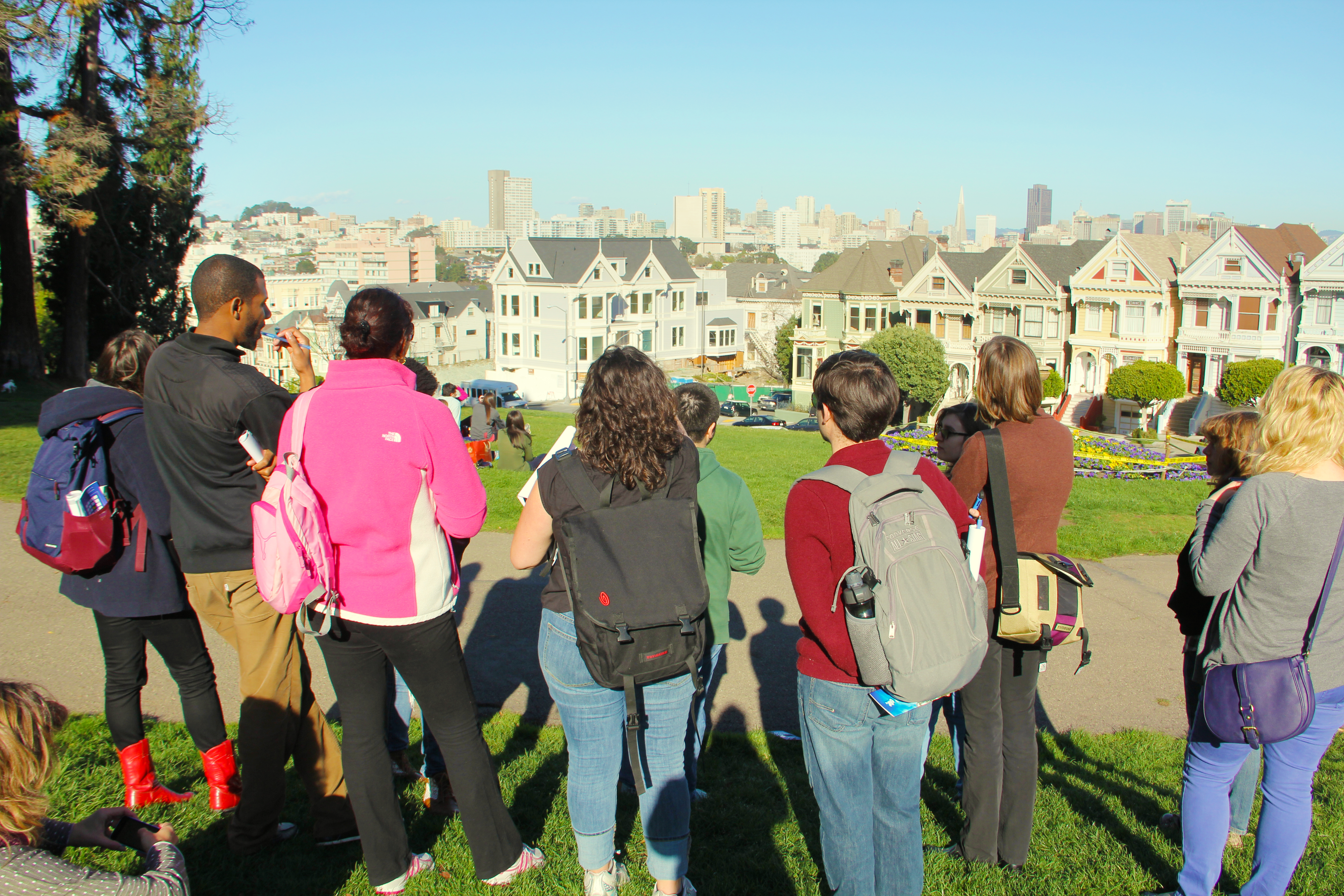
Building Community Through Engage SF
For several years now, my Engage San Francisco colleagues and I have taken students, staff, faculty, supporters, and administrators on walks in the Western Addition. We intentionally don’t call them tours, as this is the neighborhood we work with, and community partners and community members join us on the walks. Most importantly, the word ‘tour’ rings of voyeurism and doesn’t challenge the ethical implications of looking at a community rather than working with a community. We walk seeking connection and knowledge. Inevitably we see the things that we plan, and also inevitably something happens that is unplanned, which is part of the magic of being with community.
 We walk to learn about the history of the Western Addition, the Fillmore, Japantown, San Francisco, and the United States. We learn about and discuss how policies contribute to systematic injustices that impact residents in the Western Addition, particularly residents who struggle to make ends meet. We learn from and with community members and community partners and we discuss connections between USF and the Western Addition. These walks are customized for the participants and they are intentional in their design. The community partners who join us before, during, or after the walks vary because we don’t want to take folks for granted or overburden our partners with the work of teaching USF-ers how to enter and exit community respectfully. A few of the partners who have joined us include: African American Art & Culture Complex, Community Grows, Collective Impact, African American Shakespeare Company, AfroSolo and the SuccessCenterSF.
We walk to learn about the history of the Western Addition, the Fillmore, Japantown, San Francisco, and the United States. We learn about and discuss how policies contribute to systematic injustices that impact residents in the Western Addition, particularly residents who struggle to make ends meet. We learn from and with community members and community partners and we discuss connections between USF and the Western Addition. These walks are customized for the participants and they are intentional in their design. The community partners who join us before, during, or after the walks vary because we don’t want to take folks for granted or overburden our partners with the work of teaching USF-ers how to enter and exit community respectfully. A few of the partners who have joined us include: African American Art & Culture Complex, Community Grows, Collective Impact, African American Shakespeare Company, AfroSolo and the SuccessCenterSF.
The guidance I provide folks on the walk typically includes an overview of where we will go and who we will visit with along with some historical context about redevelopment and outmigration, but the most important instructions I give are: 1) Stay curious. 2) Pay Attention. 3) Examine your assumptions. This is because flexibility is required to work with community, and curiosity is needed to learn as opportunities emerge. Some examples of how the magic of community knowledge appears (because despite our best attempts, we are always obviously walking through community as a majority group of strangers) include:
The time we were walking down Fillmore with Professor Stephanie Sears, Ms. Altheda Carrie, Ms. Lynette White and the Esther Madriz Diversity Scholars and a man stopped us and said,
“If you are here to learn, one thing you need to know is that we (African Americans) all came here during the war (WWII) to build ships and then they tore our homes down. We worked here for the war and then there was no where to live. If you learn anything today, that needs to be the one thing you understand.”
The time we ran into Bicycle Bob at every turn, totaling four unplanned meetings during the course of a 2-hour walk. He was flyer-ing for an upcoming Sunday Streets event and we continued to cross paths, making the neighborhood seem small and familiar.
The time that we visited the garden at Rosa Parks elementary and Melissa Tang of  Community Grows offered the opportunity to hold one of the chickens from their chicken coop.
Community Grows offered the opportunity to hold one of the chickens from their chicken coop.
The time we saw Rico Hamilton of Street Violence Intervention Project (SVIP) outside McDonalds and he knew numerous USF-ers on the walk and generously stopped to talk with all of us about the ways his work has intersected with USF.
The first walk I went on was led by Rachel Brahinsky, Assistant Professor and Director of our Masters in Urban and Public Affairs. We ran into Reverend Al Townsend, who has been a community leader and activist for decades. Rachel knew him from interviews she had conducted with him for research and writing. He shared with Rachel’s graduate students a bit about his experience with community organizing that dates back to his days as a student at SFSU, and he joked that if he had picked a different path, perhaps he would have become as famous as his classmate, Danny Glover.
Many, many years ago a friend taught me that stories from our lives are gifts we have to give. So we take the walks to learn about the community organizations that host and teach our students, we take these walks to make history real and see the ongoing impacts of redevelopment and reflect on what is no longer there. We take walks to see the outcomes of our partnerships with the Western Addition. We also take these walks to hear stories and receive the gifts that the community has to offer. For this we are grateful because without the trust and teachings of community members we would not be able to do this work. — Karin Cotterman, Director of Engage San Francisco

